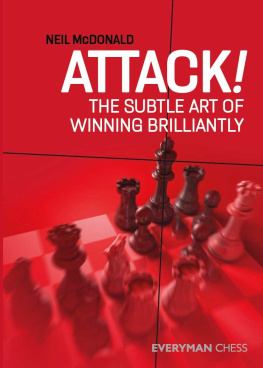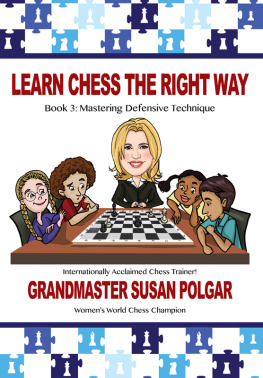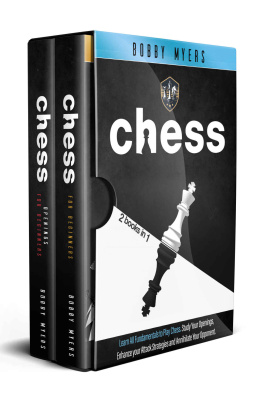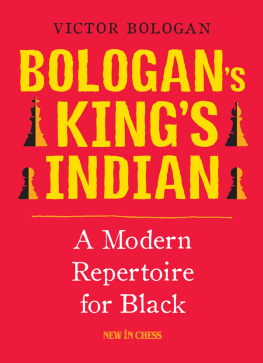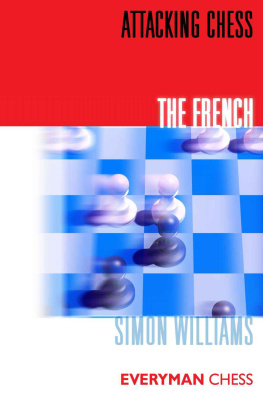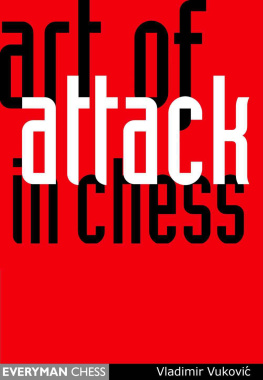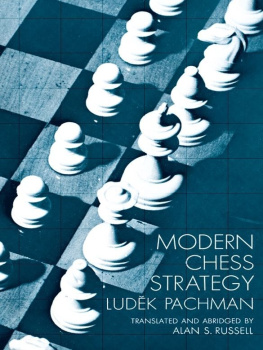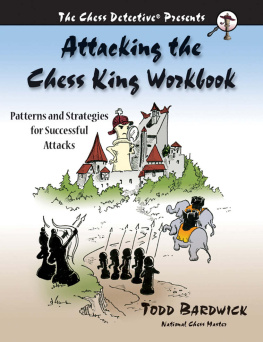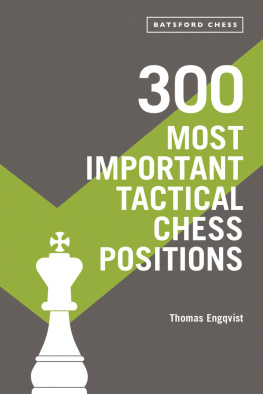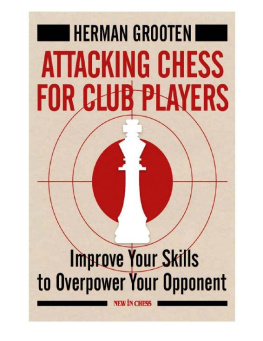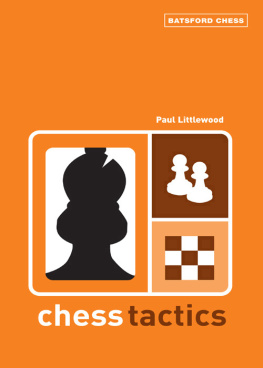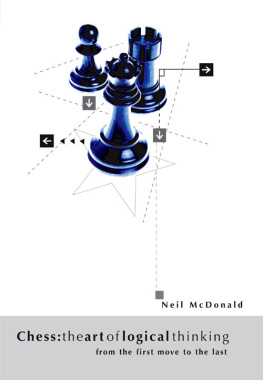
First published in 2021 by Gloucester Publishers Limited, London.
Copyright 2021 Neil McDonald
The right of Neil McDonald to be identified as the author of this work has been asserted in accordance with the Copyrights, Designs and Patents Act 1988.
All rights reserved. No part of this publication may be reproduced, stored in a
retrieval system or transmitted in any form or by any means, electronic,
electrostatic, magnetic tape, photocopying, recording or otherwise,
without prior permission of the publisher.
British Library Cataloguing-in-Publication Data
A catalogue record for this book is available from the British Library.
ISBN: 978 1 78194 567 4
Distributed in North America by National Book Network,
15200 NBN Way, Blue Ridge Summit, PA 17214. Ph: 717.794.3800.
Distributed in Europe by Central Books Ltd.,
Central Books Ltd, 50 Freshwater Road, Chadwell Heath, London, RM8 1RX.
All other sales enquiries should be directed to Everyman Chess.
email: info@everymanchess.com; website: www.everymanchess.com
Everyman is the registered trade mark of Random House Inc. and is used in this work under licence from Random House Inc.
Everyman Chess Series
Commissioning editor and advisor: Byron Jacobs
Typeset and edited by First Rank Publishing, Brighton.
Cover design by Horatio Monteverde.
Printed by TJ International Limited, Padstow, Cornwall.
About the Author
Neil McDonald became a grandmaster in 1996 and a FIDE trainer in 2017. He is a regular coach of the England Junior team at international events. Neil has written numerous books on openings, endgames, tactics and strategy as well as biographies of famous players. He lives in Gravesend in Kent, England.
Also by the Author:
Break the Rules!
Catalan: Move by Move
Chess Secrets: The Giants of Power Play
Chess Secrets: The Giants of Strategy
Coach Yourself
Concise Chess Endings
Concise Chess Middlegames
Concise Chess Openings
Dutch Leningrad
French Winawer
How to Play against 1 e4
Main Line Caro Kann
Modern Defence
Play the Dutch
Positional Sacrifices
Practical Endgame Play
Rudolf Spielmann: Master of Invention
Starting Out: 1 e4
Starting Out: Queen's Gambit Declined
Starting Out: The Dutch Defence
Starting Out: The English
Starting Out: The Rti
The Kings Indian Attack: Move by Move
The Ruy Lopez: Move by Move
Your Chess Battle Plan
Contents
Introduction
A world champion gives the following advice in his autobiography, To be passive ... is fatal to the beginner or medium player such players must be aggressive. He must attack, because only in that way can he develop his imagination, which is a very important thing.
You might think this is Tal or Alekhine endorsing the virtues of their dashing style of play. In fact the quotation is from Capablanca writing in My Chess Career back in 1920. In other words the positional maestro, whose careful approach meant he avoided defeat for eight years , is telling us to attack. Only when weve reached a high level should we pause and consider if a strategic style suits us better. Now thats food for thought.
Did Capa follow his own advice? Well he played thousands of simultaneous games in his younger years and used them to try out sacrifices and speculative attacks. These games are extant and are fun to play through. There are also beautiful attacks in his serious games he won several brilliancy prizes though he only went for broke when the needs of the position demanded it. He wouldnt have been Capablanca otherwise.
Even if you prefer a steady positional game with the gradual accumulation of advantages, it is vital that you know how to attack and make sacrifices. For example your opponent might play in a highly provocative style which gives him excellent winning chances unless you punish him with an aggressive counter-action. Or you might build up a winning positional advantage but then see it dissipate and even lose in the end because you lacked the resolution to make a sacrifice. And remember that becoming a good attacker will open your eyes to the defensive resources inherent in a position. When you are attacked, which is of course inevitable, this knowledge will make you a more resilient defender.
The purpose of this book is to deepen your understanding of dynamic chess. The nature of an attack is that it cant always be explained by general principles: sometimes a checkmate on the board is the only certain proof of the correctness of a sacrifice.
For this reason Ive included a lot of variations. When you first play through a game feel free to skip the murky details and focus on the general flow. You can always return later to examine the finer points of the struggle. If you are very serious you can treat the variations as tactical exercises. Whatever path you choose youll be improving your tactical flair.
As well as being useful for developing your imagination in Capablanca style I hope you find the games entertaining and full of enjoyable surprises.
Neil McDonald,
Gravesend, February 2021
Chapter One
Trapping the King in the Centre
In the opening a player aims to gain a foothold in the centre, develop pieces at a pace reasonable for the setting, and castle the king into safety. The purpose of a rough and ready gambit is to offer a pawn or even a piece to short-circuit this methodical build up. The philosophy is that the overall material balance wont matter if the attacker can crash through an ill-prepared defence or at least maintain a long-term initiative.
An extreme form of the gambit ideal is to catch the king in the centre and drag him out into the open before other pieces are capable of protecting him.
Game 1
A.Shirov-J.Lapinski
Daugavpils 1990
The Kings Gambit in its most uncompromising form involves heavy sacrifices. It has an earnestness unspoilt by the realities of positional chess. You tell me the weakest square in Blacks position is f7. Well then, why mess about? Open the f-file and lets get at it!
1 e4 e5 2 f4
White dislodges the pawn from e5 in order to build an unopposed centre with d2-d4. He hopes eventually to pick off the pawn with Bxf4, when he will have the open f-file along which to attack f7 with a rook (after 0-0) and a bishop (after Bc4) and maybe a knight (after Nf3 and then Ne5 or Ng5) The queen will also be expected to lend a hand in assailing the weak point.
2 ... exf4
Objectively this is probably the best response, but it does fall in somewhat with the plans of a gung-ho opponent. More annoying for such a fellow would be 2 ... d5 leading to a different type of struggle after 3 exd5 exf4 4 Nf3 Nf6 5 Bc4 Nxd5 6 0-0 Be7 etc.
3 Nf3 g5
Black is also unyielding. He not only bolsters the advanced pawn but, given the chance, intends to drive the white knight from f3 and seize the initiative himself.
The England grandmaster Mark Hebden used to be a big fan of the Kings Gambit in his youth. He told me for nostalgias sake he decided to give it one more go in a tournament as White in 2019. The game continued 3 ... Nf6!? 4 e5 Nh5 and Mark was already regretting his choice because he couldnt remember any of the theory of this line. His opponent meanwhile was moving briskly and confidently. There followed 5 Qe2 Be7 6 Nc3 d5 (actually Black should castle with at least equal chances, but he sees no reason not to grab some space). Hebden sat gloomily wondering what to do about Blacks looming counterplay on his centre. Then suddenly his mood brightened.


